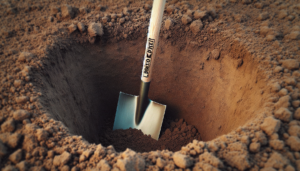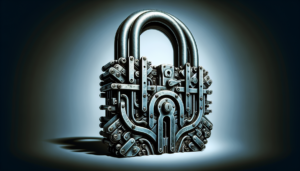In today’s uncertain world, it is crucial for individuals to have a well-thought-out emergency preparedness plan. However, the misconception that creating such a plan requires a hefty investment often deters many from taking action. But fear not, as this article aims to provide you with practical tips on how to create a low-cost emergency preparedness plan that ensures your safety and peace of mind. By following these guidelines, you can be prepared for any unforeseen circumstances without breaking the bank. So, let’s explore the cost-effective measures you can implement to safeguard yourself and your loved ones during emergencies.
Identify Potential Risks
Researching Local Hazards
When creating an emergency preparedness plan, it is essential to start by researching the specific hazards that are prevalent in your local area. These hazards can include natural disasters such as hurricanes, tornadoes, earthquakes, floods, or wildfires. Additionally, you should also consider potential human-made hazards like chemical spills or industrial accidents. By understanding the hazards that are most likely to occur, you can tailor your emergency preparedness plan to address these specific risks.
Assessing Personal Vulnerabilities
After identifying the potential hazards in your area, it is crucial to assess your personal vulnerabilities. Consider factors such as age, physical abilities, and any pre-existing medical conditions that may impact your ability to respond during an emergency. By understanding your vulnerabilities, you can develop strategies to overcome these challenges and ensure your safety and well-being.
Determining Probability and Impact
Once you have identified the local hazards and assessed your personal vulnerabilities, it is important to determine the probability and impact of each risk. This involves evaluating the likelihood of a particular hazard occurring and the potential consequences it may have on your life and property. By assessing the probability and impact of each risk, you can prioritize your preparedness efforts and allocate resources effectively.
Developing a Communication Plan
Identifying Communication Channels
In times of emergency, communication is crucial. It is important to identify various communication channels that can be utilized to stay informed and connected during an emergency. These channels can include local radio stations, emergency alert systems, social media platforms, and community notification systems. By having multiple communication options, you can ensure that you receive timely and accurate information during a crisis.
Establishing an Emergency Contact List
Creating an emergency contact list is another vital component of a comprehensive emergency preparedness plan. This list should include the contact information of family members, friends, neighbors, and other important individuals who can offer assistance or support during an emergency. Ensure that everyone on the list is aware of their role and knows how to communicate effectively.
Creating a Family or Team Communication Strategy
In addition to having an emergency contact list, it is crucial to establish a communication strategy within your family or team. Determine how you will communicate and coordinate your actions in case of an emergency. This can involve setting up regular check-in times, designating a meeting point, or using specific code words or signals to indicate distress. By establishing a clear communication strategy, everyone will know what to do and how to stay connected during an emergency situation.
Preparing an Emergency Kit
Basic Survival Supplies
An essential part of any emergency preparedness plan is the creation of an emergency kit. This kit should contain basic survival supplies to sustain you and your family for at least 72 hours. Items to include in the kit are non-perishable food, water, a flashlight, batteries, a first aid kit, a multipurpose tool, extra clothing, and any necessary personal hygiene items. Additionally, don’t forget to include items specific to your family’s needs, such as baby supplies, pet supplies, or prescription medication.
Medication and First Aid Supplies
In addition to basic survival supplies, ensure that your emergency kit includes an ample supply of any necessary medication and first aid supplies. Keep a list of all medications and their dosages, ensuring they are properly stored and within their expiration dates. It is also essential to include first aid supplies such as bandages, antiseptic wipes, gloves, and any other items specific to your family’s medical needs.
Food and Water Storage
Having an adequate supply of food and water is vital during an emergency when access to necessities may be limited. Store at least three days’ worth of non-perishable food that doesn’t require cooking or refrigeration. Include items such as canned goods, granola bars, dried fruit, and peanut butter. It is also crucial to store one gallon of water per person per day for drinking and sanitation purposes. Remember to rotate food and water supplies periodically to ensure freshness.
Important Documents and Cash
In the event of an emergency, it is important to have essential documents readily accessible. These documents may include identification cards, passports, birth certificates, insurance policies, and medical records. Consider storing copies of these documents in a waterproof and portable container. Additionally, keep some cash on hand in case ATMs or electronic payment systems are unavailable during a crisis.
Creating a Home Emergency Plan
Identifying Safe Locations
When creating a home emergency plan, it is crucial to identify safe locations within your home or nearby where you can take shelter during different types of emergencies. For example, determine the safest spot to shelter during a tornado or a designated meeting area if a fire were to occur. These safe locations should be easily accessible, well-known to all family members, and free from hazards.
Establishing Emergency Procedures
Establishing clear and concise emergency procedures is essential to ensure everyone knows what to do during an emergency. This includes outlining evacuation routes, designated assembly areas, and important safety protocols such as how to turn off utilities or operate fire extinguishers. Practice these emergency procedures regularly through drills and simulations to familiarize everyone with their roles and responsibilities.
Defining Evacuation Routes
In certain emergency situations, it may be necessary to evacuate your home. It is imperative to establish evacuation routes and identify multiple alternative routes to ensure your safety during different scenarios. Plan ahead by identifying nearby shelters, hotels, or the homes of family and friends where you can seek refuge during an evacuation. Discuss and practice these evacuation routes to ensure everyone is familiar with the plan.
Ensuring Financial Preparedness
Budgeting for Emergency Expenses
Unexpected emergencies can often result in unforeseen financial burdens. To be financially prepared, it is important to create a budget that includes funds allocated specifically for emergencies. Set aside a portion of your income each month to build up an emergency fund that can be used to cover unexpected expenses, such as temporary accommodation, repairs, or medical costs. By budgeting for emergency expenses, you can mitigate the financial strain that can accompany a crisis.
Building an Emergency Fund
To ensure financial stability during an emergency, it is crucial to build an emergency fund. Ideally, this fund should be able to cover at least three to six months of essential expenses. Start by saving a small amount each month, gradually increasing the amount over time. Consider setting up automatic transfers to a separate savings account to make it easier to build up your emergency fund. Having a financial safety net in place will provide peace of mind during difficult times.
Understanding Insurance Coverage
Reviewing and understanding your insurance coverage is a crucial aspect of financial preparedness. Evaluate your homeowner’s insurance policy, renter’s insurance, or any other relevant insurance policies to ensure they provide adequate coverage for the potential risks you may face. Discuss your coverage limits, deductibles, and exclusions with your insurance provider to ensure you have the necessary protection in the event of an emergency. Consider adding additional coverage if needed.
Building a Network of Support
Involving Family and Friends
Building a network of support is essential during times of crisis. Involve your immediate family and close friends in your emergency preparedness planning. Discuss and share your emergency plans, ensuring everyone understands their role and responsibilities. By involving your loved ones in the planning process, you can strengthen your support system and increase the likelihood of a coordinated response during an emergency.
Joining or Forming Community Groups
Joining or forming community groups focused on emergency preparedness can provide additional support and resources. Consider joining local organizations such as neighborhood watch groups or volunteer emergency response teams. These groups can offer valuable information, training opportunities, and collaboration with like-minded individuals. By actively participating in community groups, you can expand your network of support and share knowledge with others.
Sharing Resources and Skills
A network of support is not only about receiving assistance but also about offering help to others. Identify your skills, resources, and experiences that may be valuable during an emergency. Share these assets with your family, friends, and community members. For example, if you have medical or first aid training, offer to provide assistance during a crisis. By sharing resources and skills, you contribute to the overall preparedness of your community.
Educating Yourself and Others
Attending First Aid and CPR Training
Knowledge and skills in first aid and CPR can be lifesaving during an emergency, making it essential to attend training courses. Organizations such as the Red Cross offer classes that teach basic first aid techniques, CPR, and AED usage. Participating in these training sessions will equip you with the necessary skills to provide immediate assistance to someone in need. Additionally, encourage your family members and neighbors to attend these training courses for a more resilient community.
Learning Basic Survival Skills
In addition to first aid and CPR training, learning basic survival skills can greatly enhance your preparedness. Skills such as starting a fire, purifying water, building a shelter, and navigating without modern technology can be invaluable during emergencies. Seek out courses or workshops that offer instruction in these skills or learn from reliable online resources. By acquiring these skills, you will develop the confidence and capability to thrive in challenging situations.
Providing Education to Family and Community
Education is a powerful tool in promoting preparedness within your family and community. Share the knowledge you have attained through training or research with others. Offer to organize information sessions or workshops to teach important preparedness concepts. Distribute educational materials or create online resources specific to your local area. By providing education to others, you can empower them to take charge of their own preparedness and strengthen the resilience of the entire community.
Utilizing Technology for Preparedness
Downloading Emergency Apps
Technology can play a significant role in emergency preparedness. Downloading emergency apps onto your smartphone can provide access to real-time information, emergency alerts, and vital resources. Look for apps developed by government agencies, such as FEMA or the Red Cross, that offer features such as severe weather alerts, disaster maps, and preparedness checklists. By utilizing these apps, you can stay informed and prepared during an emergency.
Using Social Media for Updates
Social media platforms can also be valuable tools for receiving updates and information during emergencies. Follow local government agencies, emergency management organizations, and relevant news outlets on platforms like Twitter and Facebook. These sources often provide real-time updates, warnings, and instructions during crises. By leveraging the power of social media, you can remain informed and respond effectively to changing circumstances.
Using Online Resources and Forums
The internet offers a wealth of information and resources for emergency preparedness planning. Explore online forums, websites, and blogs focused on emergency management and preparedness. These platforms provide valuable insights, tips, and guidance from experts and individuals who have experienced different types of emergencies. Engage in discussions, ask questions, and share your knowledge to enhance the collective preparedness of the online community.
Regularly Reviewing and Updating the Plan
Conducting Routine Drills and Practice
To ensure your emergency preparedness plan remains effective, it is crucial to conduct routine drills and practice sessions. Regularly review and simulate emergency scenarios, allowing everyone in your household to practice their roles and responsibilities. This will help identify any gaps or areas for improvement in your plan. By practicing regularly, you will build familiarity and confidence in your emergency procedures, enabling a smoother response during an actual crisis.
Reassessing Risks and Vulnerabilities
Over time, risks, and vulnerabilities may change, making it essential to reassess these factors periodically. Stay informed about any new hazards or changes in your local area that could impact your safety. Additionally, consider any changes in personal circumstances, such as a new family member, a change in health status, or a rearrangement of living arrangements. By regularly reassessing risks and vulnerabilities, you can adapt your emergency preparedness plan accordingly.
Updating Contact Information and Supplies
Contact information and supplies can become outdated as time passes, so it is crucial to review and update them regularly. Ensure that your emergency contact list is up-to-date, including the phone numbers and addresses of family members, friends, and neighbors. Check expiration dates on food, water, medication, and first aid supplies in your emergency kit, replacing any items that have expired. By keeping contact information and supplies current, you can maintain the effectiveness of your emergency preparedness plan.
Promoting Safety and Preparedness in the Community
Organizing Safety Drives and Events
As an advocate for safety and preparedness, consider organizing safety drives and events within your community. This can involve hosting workshops, presentations, or training sessions centered around emergency preparedness. Collaborate with local organizations and authorities to ensure a comprehensive approach to community safety. By actively promoting safety and preparedness, you contribute to the overall resilience and well-being of your community.
Developing Disaster Preparedness Programs
Working in conjunction with local authorities, develop disaster preparedness programs that target the specific risks and needs of your community. This can involve creating educational materials, distributing emergency kits, or organizing community-wide training exercises. By developing comprehensive disaster preparedness programs, you empower individuals, families, and businesses to be proactive in their preparedness efforts.
Collaborating with Local Authorities
Partnering with local authorities, emergency management agencies, and first responders is critical in promoting safety and preparedness. Stay informed about local initiatives or programs related to emergency preparedness and actively engage with these organizations. Offer your support, voice your concerns, and provide feedback from the community perspective. Collaborating with local authorities fosters a sense of unity and ensures that the needs of the community are addressed in emergency planning and response efforts.
By following these comprehensive steps, you can create a low-cost emergency preparedness plan that addresses the potential risks in your area and ensures the safety and well-being of you and your family. Remember, implementing a plan is just the beginning – regularly reviewing and updating your emergency preparedness plan is crucial to maintaining its effectiveness. Stay proactive, educate yourself and others, and work together with your community to build a resilient and prepared society.







